The creator of Gardhab Das, Target Magazine's iconic cartoon character, on creating Gadbad Das for Pratham Books!
Posted by Amrita Bose on April 09, 2019If you grew up during the 80s and the 90s, you could not not have pored over copies of popular children’s (in today’s time it would have targeted the Young Adult category) magazine Target, published by the India Today group. A constant companion during long train journeys, sultry afternoons during summer vacations, copies of Target magazine were zealously guarded from annoying friends with borrowing-but-not-returning habits. Along with a slew of reader contributions, in-house features (anybody remembers that fantastic page dedicated to pen friends?) Target ran a bunch of popular comic strips including Detective Moochhwala by Ajit Ninan, Granny’s Gupshup by Praloy Chakravorty, It Happened in History by Renuka Narayanan. But perhaps the most memorable character remains Gardhab Das, a kurta-pajama wearing, harmonium wielding donkey, who was also an unemployed music teacher.
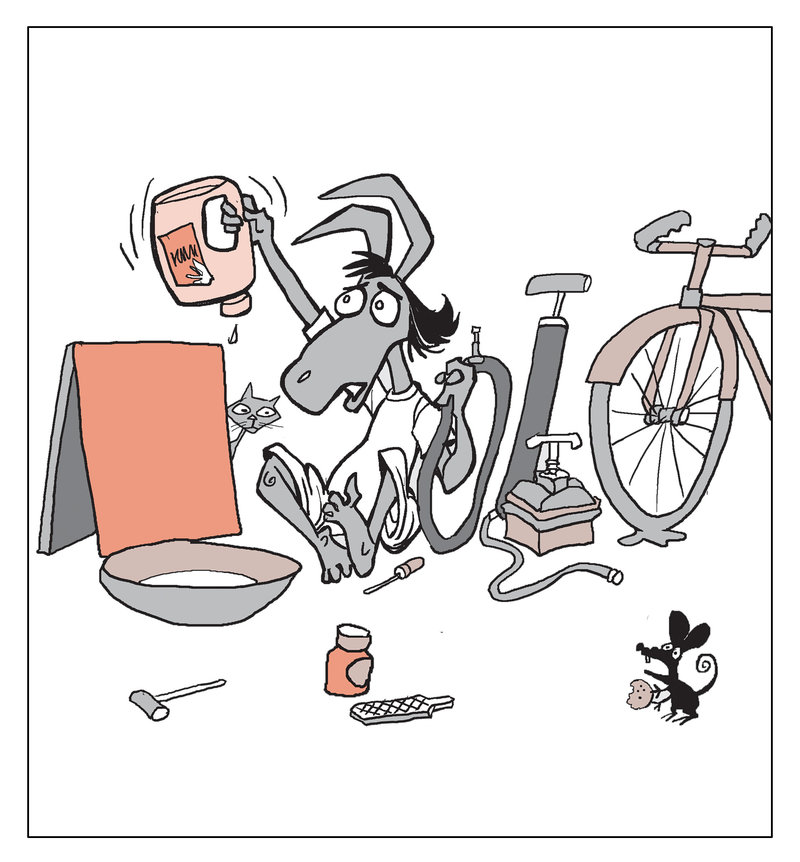
Co-created by cartoonist brothers Neelab and Jayanto Banerjee, Gardhab's favourite weapon for “mass destruction" was his singing talent or the lack of it. His singing mostly landed him in trouble, but sometimes it also got him out of sticky situations.
And bringing back the charm of Gardhab Das and the nostalgia associated with him is Jayanto with his newest creation for Pratham Books: Gadbad Das, son of Gardhabh, a millennial of sorts, but unfortunately for him, musical talent is still not in his genes. Gadbad lives in small town India. Like his pa, Gadbad is a terrible singer too. Everybody knows this, except him! Gadbad does various odd jobs to survive and solves his problems musically mostly. Like in his debut book — No Water for you, where Gadbad has to fix a puncture in his cycle shop, but he has run out of water. Off goes Gadbad to find some water, but it’s not as easy as you’d think.
Gadbad’s creator Jayanto, who has, post Target, done stints at India Today, Times of India, and Hindustan Times as a cartoonist, tells us why he decided to resurrect Gardhab Das into our lives again with his mini-me: Gadbad, reminisces about Target days and creating an iconic cartoon character.
What was the original inspiration for the Gardabh Das comic strip that ran in Target from 1980s to early 90s?
To do that I will have to go back to that era. This was the late 1980s and the editor of Target was Rosalind Wilson, a British lady. She wanted an Indian cartoon strip to be created as a double spread in the magazine and Neelabh and I met with her to discuss the possibility of creating a comic strip once in three months. Her brief to us was very clear, “It should be about your life [ we were from Lucknow], the comic strip needs to have a small town feel to it. We thought about it and decided that unlike every other comic strip that had superheroes, our hero basically would be a loser. He would be terrible at singing and unemployed and that kind of gave us that a fertile space to create really funny situations that protagonist Gardhab Das keeps getting into.
What was the appeal of Gardhab Das during his time?
Gardhab had to be an everyday character, and relatable to kids, their parents and grown ups as well. What was to be a three-monthly comic strip (featured as a double spread) soon became a monthly affair thanks to its immense popularity. In fact Gardhab became so popular that the comic strip became part of Target’s popular yearly diary, made it to annual issues and even got its own digest. There was a point in time when Gardhab was going to be killed off because its illustrator Neelab (Jayanto claims his brother was much better at creating Gardhab than him) had decided to move on, but the then editor Vijaya Ghosh insisted that Jayanto continue with the comic strip and it had another successful run for the next few years until the magazine shuttered.
What inspired you to create Garbad Das for Pratham Books? How is Gadbad similar or different from the legendary Gardabh Das?
Initially while discussing with the Pratham Books editorial team we wondered whether we should bring back the original Gardabh Das for the book. But we realised that Gardabh belonged to another era and we wanted to contemporise the character even though father and son have the same talents. Hence we decided to introduce Gadbad Das, son of Gardabh Das, a character who was born after the year 2000. Even though Gadbad might be contemporary, the look and feel of the character and the setting are more small town than metros. A hand pump, a very rare site in big cities is still prevalent in small town India. But water and water shortage is a common problem that plagues the entire country.
Jayanto hopes that Gadbad Das can become a series and become as popular as his illustrious father. Characters such as RK Laxman’s Common Man and the Amul Girl have grown on us, and are still going strong, so why not Gadbad Das, says Jayanto.
comments (7)
Book your Feelings!
Posted by Sherein Bansal on November 24, 2016Remember that character in a book that you suddenly felt a flood of empathy for? Or that literary character your book-worn hands keep going back to when you are sad, happy or even angry? Our moods, our emotions and what we feel at the moment often predict the book we will pick up, or the character that we will love the most. So we have compiled a list of our books for all your mood seasons. Be it adults or kids, we don’t want anyone to ever think, “I’m feeling so… scared. Now if only there was a book somewhere that truly understood what I’m going through.” Here are the books. Enjoy!
1. Curious-
Sister, Sister, Where Does Thunder Come From? by Roopa Pai and Greystroke
We have heard thunder and lightning are all Kumbhakarna’s doing. In fact, it could be because of some sky-riding motorbikes too. There are many possibilities to explore as a curious little boy and his big sister try to figure out ‘where does thunder come from?’ Read this beautiful story in Hindi, Marathi and Telugu.
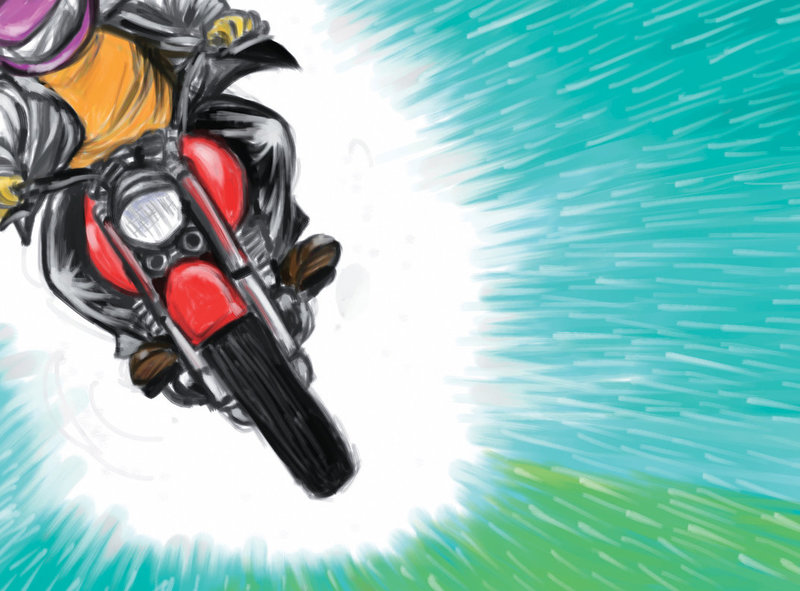
2. Sad –
Manikantan Has Enough by Anil Menon and Upamanyu Bhattacharyya
There’s something inherently sad about this book. You will notice not just the obvious longing felt acutely by the main character, but also the sad state of affairs we, as human race, might soon find ourselves in. Read this book, available in 9 languages, to feel better about yourself as you realize even in a futuristic, technology-consumed world, things are not all bright and shiny.
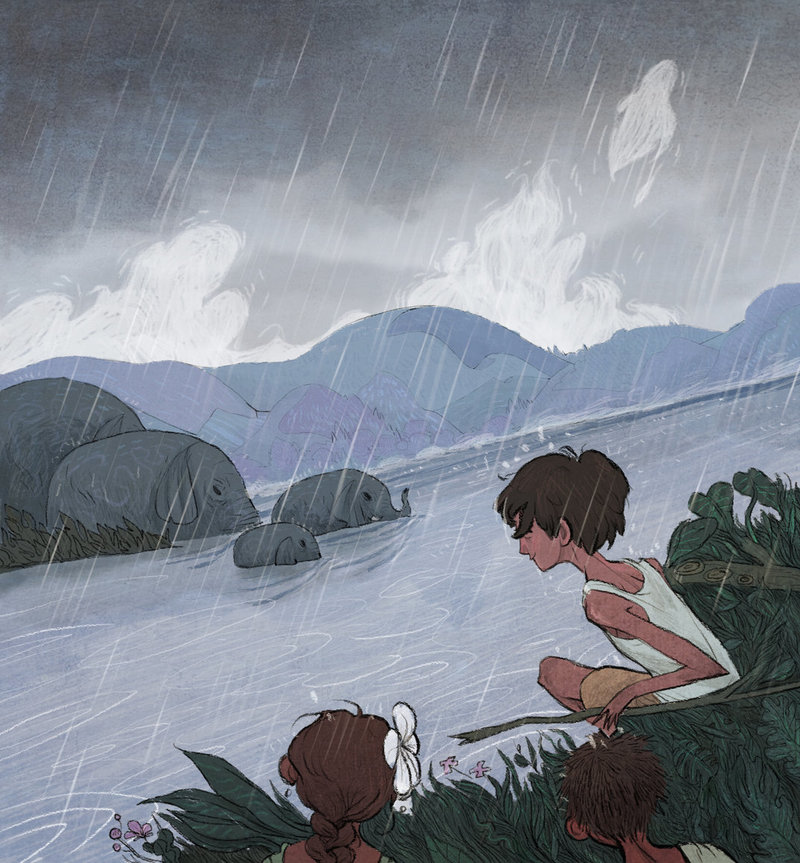
3. Angry -
Sringeri Srinivas Learns to Laugh by Rohini Nilekani and Angie & Upesh
You see the title? That’s how angry Sringeri was. He actually had to ‘learn’ to laugh. In all his books, Sringeri just can’t help but pull all the attention to himself, can he? But in this one, he has competition. From monkeys. Read in Kannada and Hindi to find out what happens when a bunch of monkeys get on his nerves.
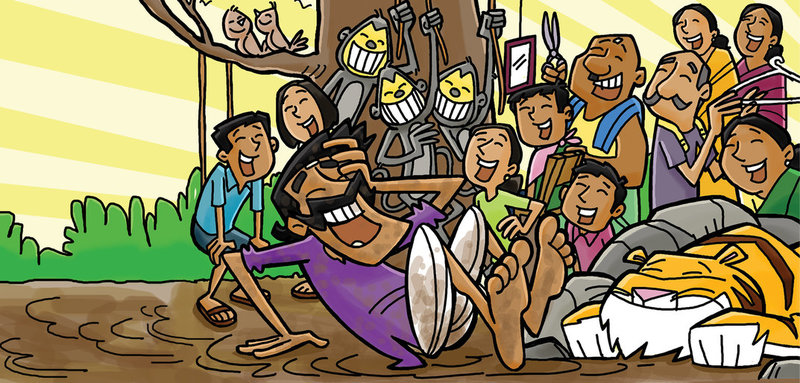
4. Vengeful –
Chakora, The Brave Dog by Ashwin Suvarna
Don’t for a moment think that the animal kingdom is not fraught with feuds, jealousies and revenge. This community user has depicted the secret world of animals in this wonderful story about struggles of a dog, his journey, and how he faces animals bent on taking revenge.
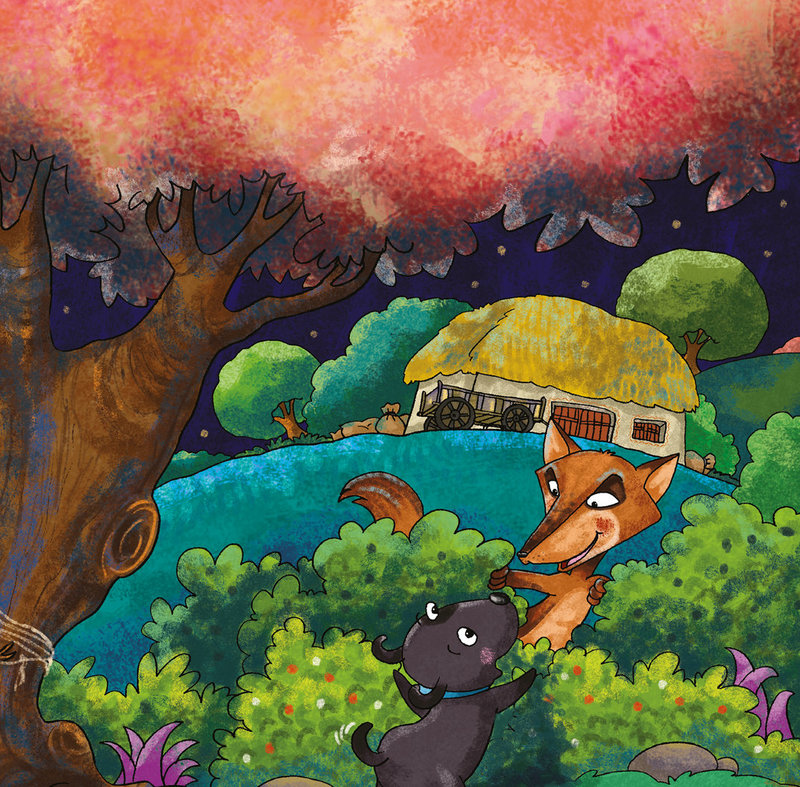
5. Compassionate-
Reeti and Mithu by Anupa Lal and Soumya Menon
We have an untapped reservoir of compassion that we are not aware of at times. Meet Reeti, a little girl who suddenly realizes that her friendship with Mithu, her parrot, is not equal or fair. Join her on her discovery of compassion in this story available in ten Indian languages.
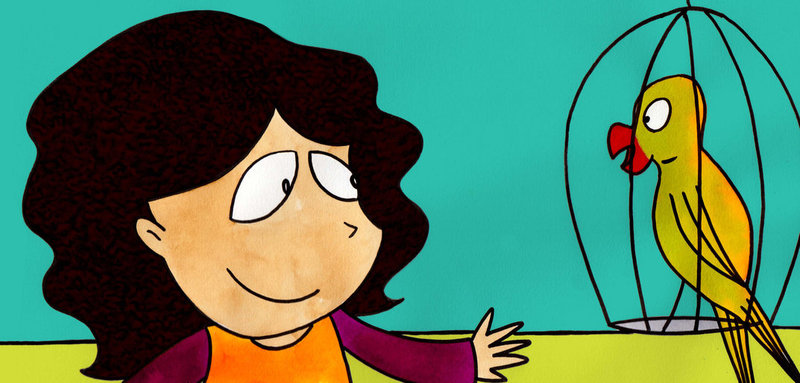
6. Vain-
आम्ही सारे प्राणी by Madhav Chavan , Meera Tendolkar and Santosh Pujari
Proud of your hair? Your teeth? Your lack of tail? Huh? Well, vanity knows no bounds and no logic either sometimes. Here’s a sweet story about a little girl who is showing off in front of a bunch of animals, trying to prove humans are better than animals. Do the animals take it well, and who turns out to be better in the end? Read this Marathi story in Kannada, English and Telugu to find out!
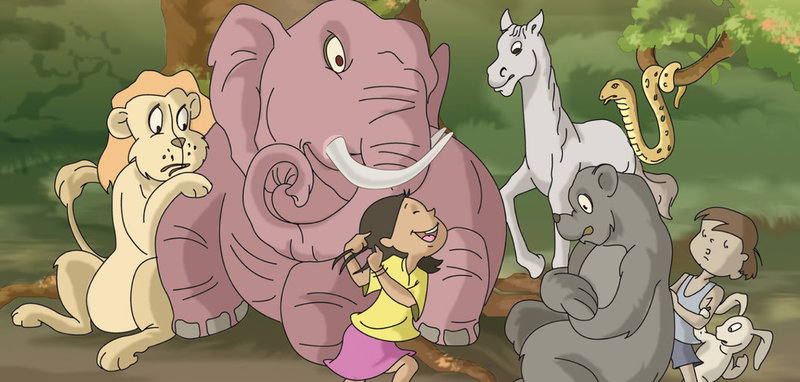
7. Funny-
Saboo and Jojo by Herminder Ohri
Happy endings are great. Funny endings are even better. Here’s a story that will remind you of all the adorably funny things we used to say and do as kids. Saboo and Jojo is available to read in 6 languages, three of which are translations done by our community in Kora, Santali and even French!
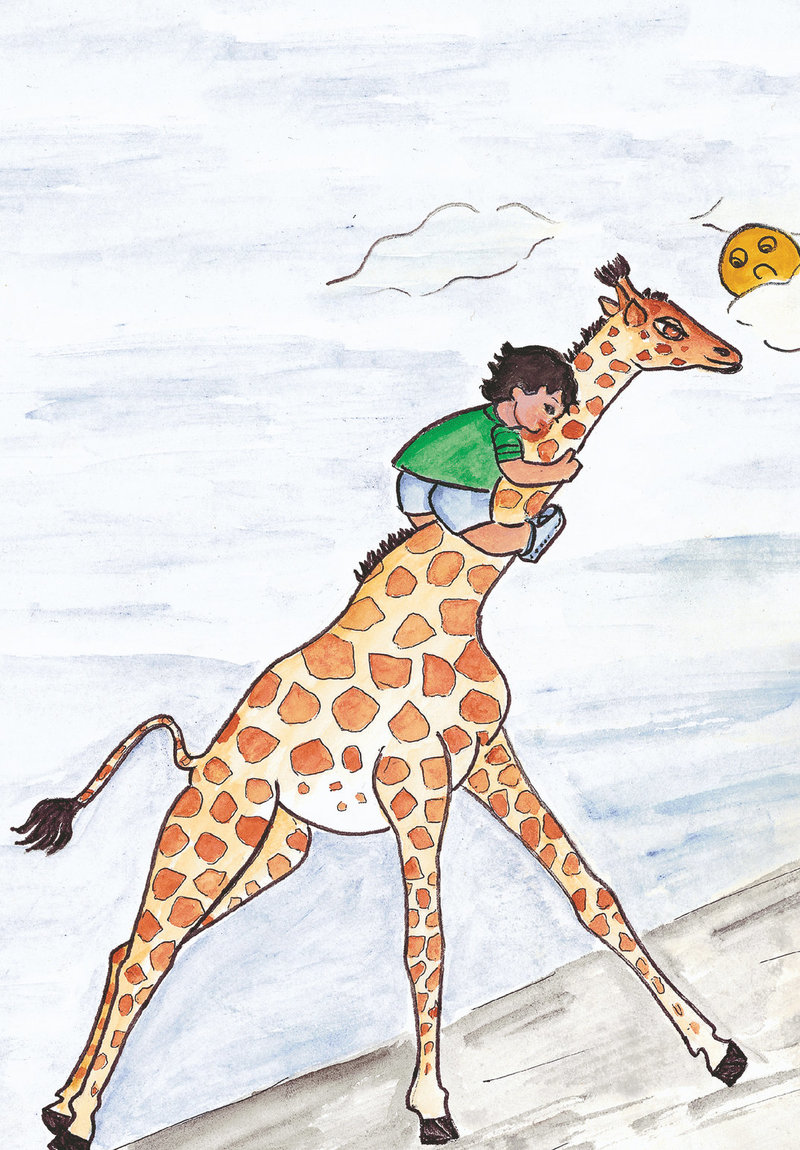
8. Playful-
निराली दादी by Mala Kumar , Manisha Chaudhry and Niloufer Wadia
Meet this grandmother. She can’t stay still. She refuses to slow down. Her fun is just getting started. Watch her quick playful hands bounce and juggle everything from frying pans to office supplies! This grandma has tossed up quite a lot of trouble for herself. Watch out for her!
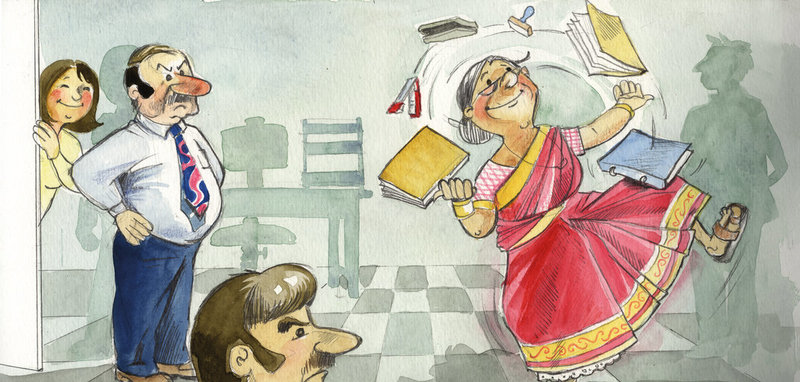
9. Excited-
Pambaram, the Naughty Top by Kavitha Punniyamurthi and Ajanta Guhathakurta
We just cleaned up and found something delightful - a naughty spinning top! This pambaram will spin and spin until your head does the same. Priya and Bala were playing with Pambaram when suddenly it took off! Help the kids chase the super-excited Pambaram as it weaves its way through the house and neigbourhood making things… and people fall. Also available in Hindi and Marathi.
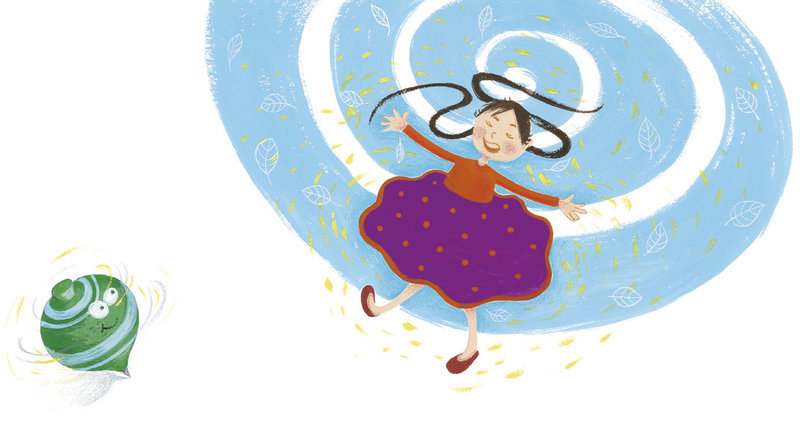
10. Scared-
Under My Bed by Anupa Lal and Suvidha Mistry
We often do a double take at night when we see a shadow that looks creepily like a full-fledged person. While we pretend to be brave, a child’s mind doesn’t quite work like that. Thankfully. So, here’s a story about fear that makes us see danger in innocence, available in bilingual formats too with English in Telugu, Marathi and Hindi.
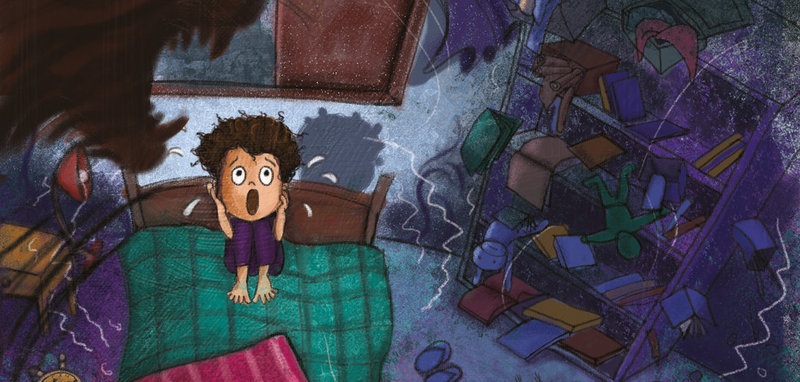
What are YOU feeling today? Tell us the story you relate to the most in the comments, or on Twitter and Facebook!
Be the first to comment.
Freedom to Read 2021 | Frequently Asked Questions
Posted by Pallavi Kamath on February 21, 2021Every year, StoryWeaver marks International Mother Language Day (IMLD) in an effort to remind us that learning to read in one’s mother tongue early in school helps reduce dropout rates and makes education more engaging, meaningful and enjoyable for children. Focused on the co-creation of digital books in multiple languages, StoryWeaver’s ‘Freedom to Read’ campaign is now in its 5th year of giving children across the world the opportunity to read in their mother tongue.

WHO CAN APPLY?
I belong to an organisation. Can we take part?
Yes! We welcome all organisations - non-profits, social enterprises, for-profits, ed-tech startups - committed to spreading the joy of reading in local languages and working in the spaces of education and literacy to apply to join hands with us towards this ambitious endeavour.
I'm an individual. Can I take part?
For this edition of Freedom to Read, we are looking to collaborate only with organisations who work with and can distribute books to children.
We are a group of teachers. We want to build a digital library for our school. Can we participate?
Educators across the world have created mother tongue resources for children in languages like Kora, Santali, Cebuano-Cebu and Bahasa Indonesia. So we encourage more educators to participate!
How many members should I have in my team?
You can have as little as one to as many members in your team as you can rally together. The more the merrier!
WHY SHOULD I APPLY?
How is participating in this initiative different from simply using StoryWeaver to translate and publish books in my language?
Selected partners will benefit in a number of ways from being a part of the 'Freedom to Read 2020' campaign. First of all, quality-assured, reviewed translations published through this initiative will carry a 'Recommended' tag and will be promoted. Secondly, organisations taking part will be listed as partners on the StoryWeaver platform. They will have their own easy to access profile page (have a look at The Ugandan Christian University's profile page) and a dashboard for tracking their library’s progress. Most importantly, participants will also have access to mentoring in translation, editing, community mobilisation and documentation.
Will participation help me connect with others taking part to translate / create storybooks in the same language?
If we receive requests from more than one organisation to translate content to a particular language, then we will do our best to connect them so that they may work collaboratively towards creating the digital library.
Is this a contest? Is there prize money to be won?
This is not a contest, rather an invitation to collaborate with StoryWeaver to help create and share digital libraries in mother languages with few or no books. There is no prize money. However shortlisted teams will receive support and mentoring from StoryWeaver in not only creating the digital libraries but also the opportunity to publish their storybooks which will be featured prominently on the platform and reach a global audience. Participating in the 'Freedom to Read 2021' campaign will be beneficial to their work in areas such as documentation, community mobilisation etc.
Is there a participation fee?
No, there is not. Teams selected to collaborate with us will not have to pay any money towards the creation of the digital library.
WHAT RESOURCES WILL I NEED TO PARTICIPATE?
One or more language enthusiasts or educators excited about working on this project, a WiFi connection and a laptop or desktop computer are the main resources you need to start work!
DETAILS OF THE DIGITAL LIBRARIES WE ARE GOING TO BUILD
We are aiming to build digital libraries that comprise of storybooks in languages which have few or no children’s books. For each chosen mother tongue, you will create a library with at least 50 storybooks.
Why are you recommending the digital library have at least 50 books?
Imagine being able to borrow a brand new book every week for a whole year, in the language of your choice! By creating a digital library with at least 50 books, you're ensuring that children have new and exciting books to look forward to, and in their own mother tongue! Children can explore a range of topics and themes and progress through reading levels, ensuring their reading skills advance. Take a look at the digital libraries in French and Gondi on StoryWeaver for inspiration!
Why only digital libraries? How will digital libraries benefit my community?
Digital libraries are easy to share with many members, irrespective of their location and books can be added to them with ease. They can help preserve your language with books for future generations to read, enjoy and share and can improve access to good quality children's literature for your community. You will not only be able to access the library online, but also by downloading PDFs of the books, or through the Offline Library feature.
I don't have the infrastructure to build a digital library. Can participating help me with that?
All you need to begin building a digital book library in your chosen language is a team (it could even just be you!) of people who are skilled and enthusiastic about working towards this end goal. A WiFi connection and a laptop or desktop computer are the only digital tools you need to start work!
Who will review the quality of storybooks translated?
We recommend your team builds in a peer-to-peer review system while creating your digital book library. You might also like to assemble an expert panel who can review the translations and share feedback with your team before you publish the books. The goal is to create a reading level appropriate, quality-assured digital library of books in the language of your choice.
We shall provide you with best practices, resources and mentorship through the entire process of translating books for children.
Will my team have its own website? If not, where will this digital library exist?
All the digital libraries created through this effort will be published on StoryWeaver, and the books can be read, shared and downloaded for free. However, you are also free to download these books and add them to your own reading platform should you wish to do so. Selected organisations will have their own profile page which they can access and share. Take a look at CGnetSwara and The Asia Foundation's profile pages.
How can readers access the library?
StoryWeaver is a digital repository of openly licensed, multilingual books for children. Anyone can read, share and download the storybooks on our platform for free!
What resources will we require to run this digital library once it is ready?
There are a number of ways you can run your library once it's ready. You can share the link to your library with your community so that they can read the books online. If internet access is a concern, you can download the books via our Offline Library and access them whenever they like. You can also use the digital library of books to create a year-long reading programme for your community. Basically, you can use this library based on the resources available to you and potential members.
We would also like to have physical copies of books we translate in our digital library. Is this possible?
Once you have published the books, you can download them in a variety of formats, and print these books should you wish to. In the past organisations like the Konkani Bhasha Mandal and Suchana have obtained third party funding to print books translated on StoryWeaver and distribute them.
ABOUT FREE-TO-USE DIGITAL LIBRARIES
How does "free-to-use" work? What is CC BY 4.0?
All content on StoryWeaver is openly licensed under one of THE most liberal Creative Commons licenses: CC BY 4.0. That means that anyone and everyone can read, download, share or repurpose the content on the platform for free. Once your library is on StoryWeaver, anyone can read and download the books, translate them into another language, or remix, transform, and build upon the material for any purpose, even commercially.
How will I/my team get credited for the books we translate?
We recommend that each member of your team create their own, individual accounts on StoryWeaver. This ensures that each member of the team is attributed for their contribution to the library. You might want to create an attribution page crediting your entire team on the last page of every book you translate, like the one in this book.
As an organisation with a team of translators, will the credit go to the organisation or individual team members?
Each translator will be attributed for contribution to the digital library. Organisations with participating teams will be featured on the platform as a translation partner, and will be able to access their digital library through a unique profile page.
Who other than my organisation and its members can access my digital library?
As the content comes under the CC BY 4.0 license, having a digital library on StoryWeaver means that your library will have a global audience, and your storybooks are free to read and download by anyone across the world.
LANGUAGE FOCUS
What kind of languages are you looking to create digital libraries in?
A UNESCO report on mother tongue literacy states, 'children should be taught in a language they understand, yet as much as 40% of the global population does not have access to education in a language they speak or understand'.
Our aim for 'Freedom to Read' is to build quality-assured digital libraries in underserved languages.
StoryWeaver doesn't have my mother tongue listed. Can I still participate?
Yes! If selected, your mother tongue will be added to StoryWeaver, provided there is a Unicode compliant font for your language. Write to us at [email protected] and we will initiate adding your language to the platform.
Can we translate books into more than one language?
We want to help you build a quality-assured digital library in the language of your choice. If you and your team are adept at more than one language, then you may choose to create more than one digital library.
Does "building" a digital library mean that we will only be translating existing books into our mother tongue? Can we also write our own books?
'Freedom to Read 2021' is all about translating existing work and you get an opportunity to choose from thousands of different books, for various levels of reading. You can choose books based on your children's needs and topics that appeal to you. Unfortunately, you will not be able to write your own books within the scope of this campaign.
HELP WITH CONTENT SELECTION FOR YOUR LIBRARY
How do I know that the books I choose don't have an existing translation in my mother tongue?
Once you sign up on StoryWeaver, click on Translate, choose your language, and you will see the books that don’t have translations. Our content team can also assist you in curating a list of 50 books across themes and reading levels, as per your needs. The books encompass a gamut of reading levels and themes, including Early Readers, Bilinguals, STEM, as well as the Curated Reading Programme. With your help, we will be making much-needed children’s books available in more languages.
You can also click on Read and choose your language from the filter. This will show you all the books on the platform in your language.
What if the book I choose has an existing translation? Does my contribution still count?
Yes, it does!
Will we receive help from StoryWeaver in choosing books which can be used in classrooms/storytelling sessions?
You and your team have the freedom to choose your own books, but StoryWeaver will lend its expertise in book selection, if you need any help!
Application timelines and guidelines
-
The last date for applications: March 7, 2021
-
Pratham Books reserves the final rights to select partners.
-
Selected partners will sign a letter of understanding with Pratham Books.
-
Only selected partners will be eligible for translation support and mentoring.
-
Applications for building digital libraries in languages with few or no books will be given preference over those in mainstream languages or languages that already have a digital library of 100 storybooks on StoryWeaver.
-
Applicants with basic digital infrastructure and language resources to create a local digital library will also be given preference.
-
All content created and published by you / your organisation on StoryWeaver as part of the 'Freedom to Read 2020' campaign will by default be licensed under CC BY 4.0.
If you have any further queries, write to us at [email protected].
Be the first to comment.